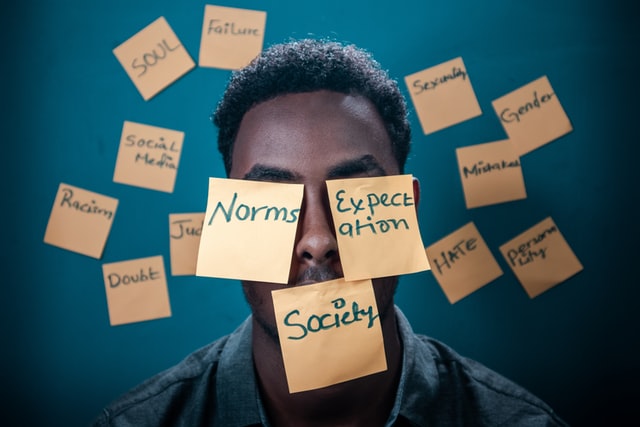There are many different types of inequalities in the world. Some people might say that there is a natural hierarchy, while others might say that social constructs create differences between people. This blog post will explore the difference between natural and social inequality.
What is Social Inequality?
Social inequality involves a situation in which the distribution of resources within society is uneven. It’s the fact that some individuals have access to social goods in a given community as compared to others due to their power, religion, family ties, and reputation. [Source].
Examples of Social Inequality
The most common type of social inequality is that women are not given the same opportunities as males, such as becoming national leaders and holding high offices in government or business. Another example is the treatment of people based on race, such as when black individuals in most European countries are subject to racism and do not receive an equal chance at applying for a position. There is also an income gap between workers of different races or gender.

Drivers of Social Inequality
Various factors drive social inequality, and some are linked to stereotypes. For example, women are regarded as harmless and frail thus;, they are not given the responsibility of leading a nation or a large business. Gender roles are another source of social inequality. Certain cultures have established gender roles, making it difficult for men and women to break free from them. In addition, racism is often seen in nations where other minorities are abused. Social classes also contribute to social inequality by allowing members of lower classes to be avoided. Globalization plays a part in inequality because the world is now a global village; people have an inferiority complex and look down on others. [Source].
How to Remedy Social Inequality?
Economic inclusion and enabling everyone to share in economic prosperity may reduce social inequality. [Source]. There’s also a need to increase the wage for low earners, narrowing the income gap between rich and poor individuals. Gender roles should be re-drafted or dismissed as this will give both men and women equal opportunities to achieve their dream in life. When there is a promotion, vacancy, or award, it should be determined that all people are rewarded based on their hard work rather than race or gender. Stern measures must be taken against racist tendencies and abusers and monopolization. Also, people must warm up to tolerance to co-exist with others from different backgrounds.
What is Natural Inequality?
Natural inequality is defined as “inequality for which society is not responsible under previous actions and policies” [Source]. Natural things that are not evenly distributed, such as minerals, and wildlife. This implies that natural inequality is a consequence of how the world was formed rather than human actions.
Examples of Natural Inequality
A typical example of natural inequality is the difference in people’s IQ and intellectual ability. Natural inequality also extends to people’s height, health, the difference in age, and cognitive development.

Drivers of Natural Inequality
Natural inequality is linked to physical circumstances. It may be influenced by weather conditions in a specific country, the movement of different species of animals, or the growth of plants. Natural disasters such as volcanoes and tectonic movements such as earthquakes and tremors also influence natural inequality. The nature of species and type of vegetation, soil, and landscape play a part in natural inequality. When it comes to people’s physical appearances or abilities, this is primarily determined by one’s blood, race, bone structure, and weather conditions.
How to Remedy Natural Inequality?
Natural inequality in terms of people’s physical abilities is changed through an operation such as skin grafting, enlargement, or reduction of particular body parts. Science has enabled humans to change a lot of characteristics about their bodies and their complexion, and even hair color. Environmentalists fix natural inequality by shifting species from other regions to theirs and influencing the weather by planting trees and cloud seeding activities.
How do Social differences lead to Social Inequality?
Social differences can be defined as dissimilarities that exist in society [Source], and they can be caused by birth or self-choice. They include differences between males and females, heights, complexion, religions, and traditions.
Social differences can fuel social inequality because they show variations among people in one society. For example, contemporary racism was born after looking at different complexions. The social difference in gender contributes to gender roles between men and women, which dictates that men are more strong and intelligent than their counterparts. Social differences enact stereotypes in society, leading to social inequality. For example, knowing that one is an atheist will probably cause problems in a Christian-dominated community.
Social differences were responsible for social class in the colonial period in African countries. Whites became the first class, those with mixed races were the second class, and blacks were regarded as the lower class. Thus, social differences do lead to social inequality.
Key differences between Natural and Social Inequality
Natural inequality refers to differences in physical conditions and social inequality related to social phenomena. In natural inequality, differences are noted in natural things such as a person’s physical appearance, and social inequality is found in human-created entities such as racism and segregation. Humans cannot be blamed for natural inequality, but they can be fully blamed on social inequality. People influence social inequality, but it is hard for them to influence natural inequality.
Society is variations in money, caste, positions, or roles, which define societal activities [Source]. Humans can solve social inequality if everyone is willing. In contrast, natural inequality is a unique existence that can be changed by science or not.
Key Similarities
Both natural and social inequality are variations that note out differences between humans. These inequalities are responsible for causing tensions in society; for instance, different races are a natural inequality that fuels social inequality in terms of racism and segregation. Natural resources inequality has led to wars and friction between nations.







































